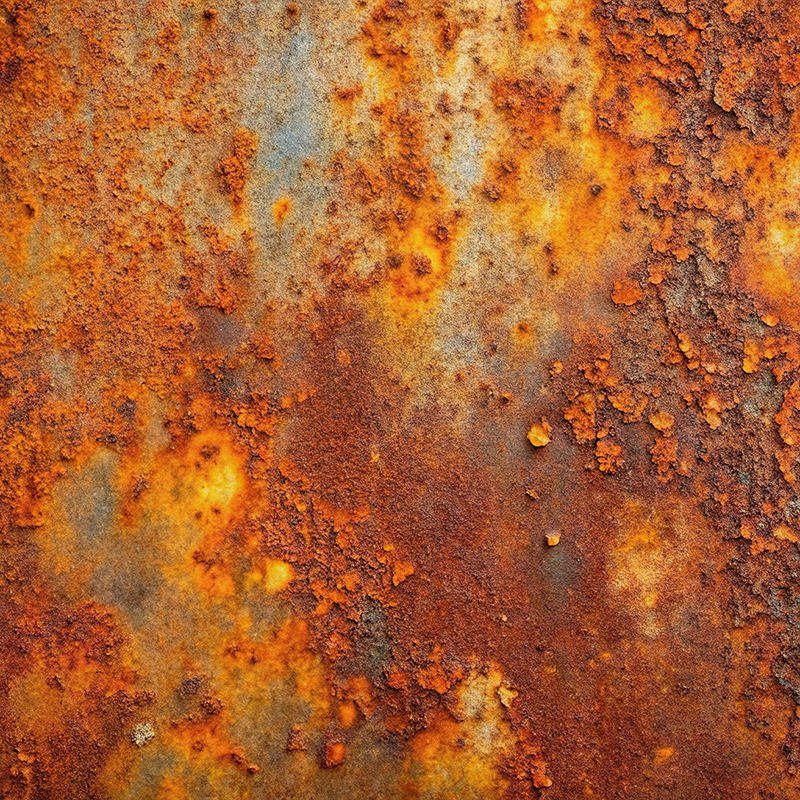
Corrosion
The corrosion protection of stainless steels – colloquially known as ‘Nirosta’ – is essentially based on a passive chromium oxide layer.
Corrosion is a crucial issue in the operation of mixers, synthesis dryers and vacuum mixing dryers. It becomes particularly critical when components are in direct contact with the products being processed. High-quality active pharmaceutical ingredients (APIs) must be manufactured with the highest degree of purity. Their synthesis involves numerous stages, often using aggressive solvents. These can attack metallic materials and, in extreme cases, destroy them.
In addition to chemical stress (stress corrosion cracking), additional stresses often occur. For example, high stresses arise when processes take place under pressure or vacuum.
High temperatures, abrupt temperature changes or thermal cycles can cause premature fatigue in the materials. Various forms of corrosion can occur under such conditions. Surface corrosion can be taken into account in the design by means of so-called corrosion allowances. More critical are pitting or needle corrosion. This mainly affects austenitic stainless steels when chloride-containing media or salt solutions come into contact with the surface.
The corrosion protection of stainless steels – colloquially known as ‘Nirosta’ – is basically based on a passive chromium oxide layer. This is formed by the influence of atmospheric oxygen on the surface and inhibits further corrosion. When a powder containing solids is agitated in a mixer, friction causes bare metal surfaces to form. This mechanically removes metallurgical defects that could be prone to corrosion. Immediately afterwards, the protective passive layer regenerates itself. This principle gives stainless steels a remarkable self-healing ability.
The situation is different for liquids without abrasive solids. Here, there is no mechanical reworking of the surfaces. In order to maintain the best possible quality of the passive layer, electropolishing is often used. Compared to mechanical grinding or lapping, this produces particularly smooth and homogeneous surfaces with increased corrosion resistance.
However, depending on the aggressiveness of the media used, standard materials such as 1.4404 (AISI 316L) are not always sufficient. In such cases, nickel-based alloys such as Alloy C22 or Alloy 59 are used. These are characterised by high resistance to oxidising and reducing media, are suitable for welding and can be machined despite their high alloy content. Another group of materials are the so-called super duplex steels. They combine high corrosion resistance with good strength and have a two-phase microstructure of ferrite and austenite. Unlike austenitic steels, they are slightly magnetic, which makes them easier to identify.
Choosing the right material is crucial to ensuring the service life of process plants and guaranteeing product purity. This always requires careful consideration of corrosion resistance, weldability, mechanical strength and process engineering requirements.
